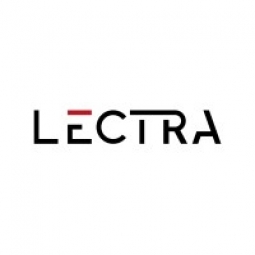下载PDF
ASTRO APPAREL GROUP mAinTAinS iSO STAndARdS through its 30-year partnership with Lectra
技术
- 功能应用 - 制造执行系统 (MES)
- 功能应用 - 产品数据管理系统
- 功能应用 - 产品生命周期管理系统 (PLM)
适用行业
- 服装
适用功能
- 产品研发
- 质量保证
用例
- 库存管理
- 自动化制造系统
- 过程控制与优化
服务
- 软件设计与工程服务
- 系统集成
挑战
ASTRO Apparel needed to update its design and product development capabilities to maintain its ISO-certified quality standards amidst increasingly complex production requirements. The company, which produces 1.5 million garments annually, including school wear and menswear, distributes its products through over 1000 stores in the US. To manage this complexity and maintain its competitive edge, ASTRO required intelligent technology solutions. The company has been a Lectra customer for 30 years and constantly seeks to improve production efficiency and accelerate time-to-market.
关于客户
ASTRO Apparel is a family-run apparel manufacturer and importer founded in 1946, based in Scranton, Pennsylvania, USA. The company is known for its strong focus on social and environmental responsibility and holds ISO 9001:2008 and ISO 14001:2004 certifications. ASTRO produces 1.5 million garments annually, including school uniforms and menswear, which are distributed by more than 1000 stores across the United States. The company values its ISO certifications highly and aims to maintain these standards to set itself apart from the competition. ASTRO has been a customer of Lectra for 30 years, leveraging their technology solutions to stay competitive and efficient.
解决方案
Lectra proposed the latest versions of its software solutions to improve ASTRO's performance, particularly in pre-production. ASTRO recently invested in the latest version of Lectra’s Diamino, a marker-making solution that facilitates marker creation for various garments and fabrics, delivering high efficiency. This upgrade has enabled ASTRO to reduce its marker-making cycle time by nearly 20%, increase overall productivity by 20%, and achieve fabric savings of at least 1%. The company also uses Lectra Modaris for pattern making, which complements Diamino well, especially for matching plaids in a marker. The adoption of these solutions has helped ASTRO maintain high garment quality and fit, improve turnaround times, and stay competitive.
运营影响
数量效益
相关案例.

Case Study
Fire Alarm System and Remote Monitoring Sytem
Fire alarm systems are essential in providing an early warning in the event of fire. They help to save lives and protect property whilst also fulfilling the needs of insurance companies and government departments.Fire alarm systems typically consist of several inter-linked components, such as smoke detectors, heat detector, carbon monoxide, manual call points, sounders, alarm and buzzer. The fire alarm system should give immediate information in order to prevent the fire spread and protect live and property.To get maximum protection a shoe manufacturer in Indonesia opted for a new fire alarm system to monitor 13 production sites spread over 160 hectars. Although the company had an existing fire alarm system, it could not be monitored remotely.It was essential that the new system would be able to be monitored from a central control room. It needed to be able to connect to the existing smoke detector and manual call point. Information should be easily collected and passed on to the Supervisory Control and Data Acquisition (SCADA) system. Furthermore, the system should have several features such as alarm management, auto reporting, being connected to many client computers without additional cost, and run 24/7 without fails. The company also needed a system which could be implemented without changing the architecture of the existing fire alarm system.

Case Study
IoT Applications and Upgrades in Textile Plant
At any given time, the textile company’s manufacturing facility has up to 2,000 textile carts in use. These carts are pushed from room to room, carrying materials or semi-finished products. Previously, a paper with a hand-written description was attached to each cart. This traditional method of processing made product tracking extremely difficult. Additionally, making sure that every cart of materials or semi-finished products went to its correct processing work station was also a problem. Therefore, the company desired an intelligent solution for tracking assets at their factories. They also wanted a solution that would help them collect process data so they could improve their manufacturing efficiency.

Case Study
Retailer Uses RFID Scanner to Improve Efficiency
Patrizia Pepe wished to improve the logistics of their warehouse: accepting incoming goods from their production sites, movement of items throughout
the warehouse, and packaging of goods for distribution to the retail locations. They initially tried to use barcodes for this function. Because barcodes must be individually scanned within a line-of-sight, the acceptance of goods coming into the warehouse was too time consuming. Working with the University of Florence, Patrizia Pepe instituted a five-month pilot project beginning in August of 2009 to test the validity of an RFID solution. The pilot involved tagging of about 60,000 items for the second seasonal collection, and convinced the company to move forward with tagging all items.

Case Study
Monitoring and Controlling Automatic Mixing and Dispensing Machines
As technology advances, textile manufacturing has been transformed from a labor-intensive to a partially or fully automated industry. Automation is significant in all segments of textile production - from spinning to printing, and textile machinery manufacturers are constantly searching for new technologies and automation processes will increase the productivity of their machines. The color paste mixing and dispensing machine is an essential part of the printing and dyeing process. With the advantage of automatically computerized controls and database management, the system can significantly improve its dispensing precision, working efficiency and production quality as well as reducing material consumption.







